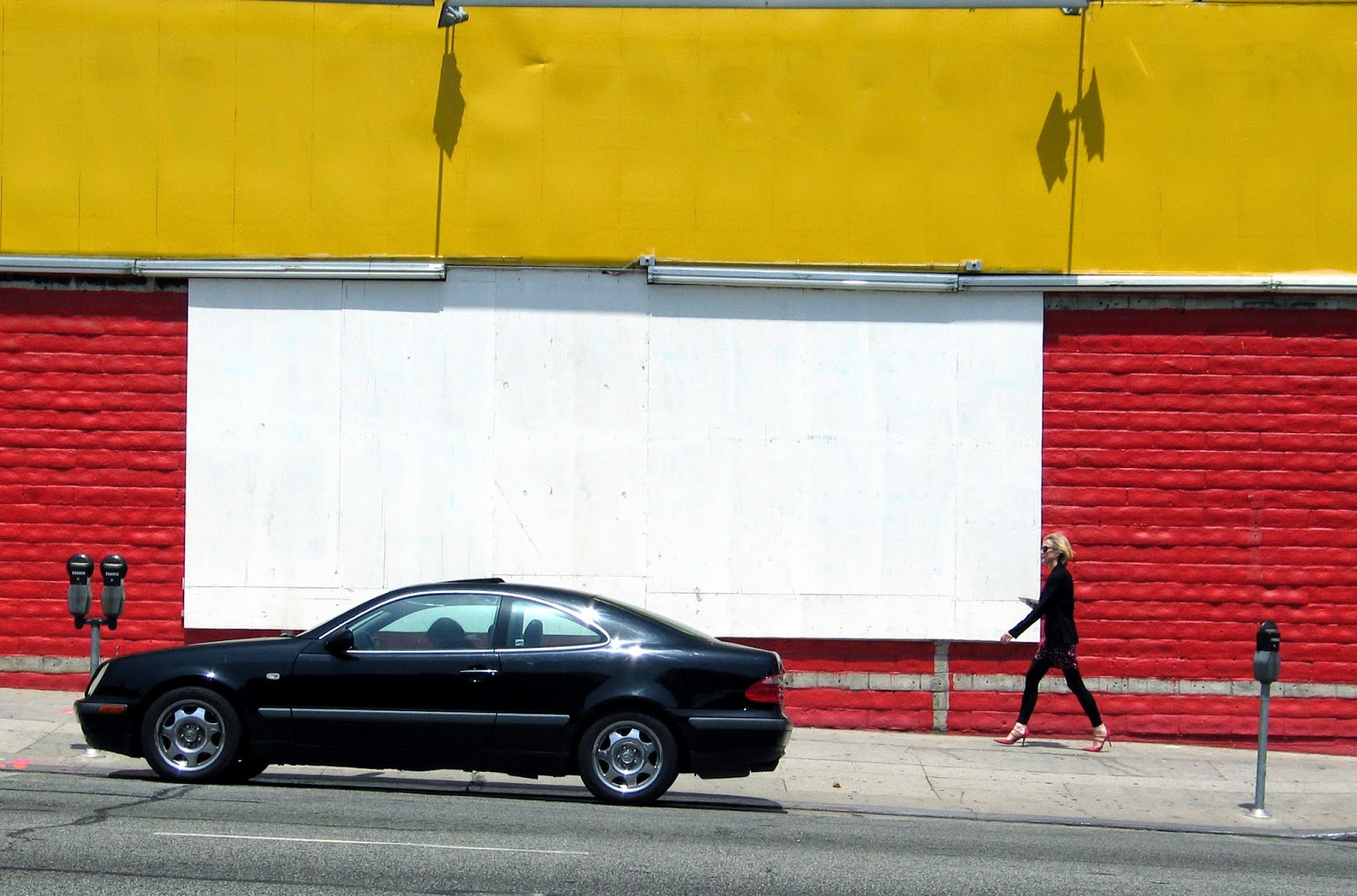So I was walking on Hollywood Boulevard, and I
went to see an exhibition at the LACE gallery, a “storefront installation” of
photographs by Ave Pildas, titled Hollywood
Boulevard The 70s. Pildas worked as
an art director at Capitol Records just up the street, and he took thousands of
pictures on the Walk of Fame, between 1972 and 1975, although just 50 were on
display at LACE.
Pildas says, "At that time people were saying the
country was tilted to the West and all the crazies rolled towards California. They
stopped just short of the ocean and landed in Hollywood."
I
can testify to the essential accuracy of that.
This was the time I first set foot on Hollywood Boulevard: in 1974. I was a fairly young, though not entirely
naïve, English hitchhiker, absorbing the very last rays of the hippy sunset,
and although there was still a “sex and drugs and rock and roll” vibe to Hollywood,
it didn’t feel like any summer of love.
The place was scary. The people
didn’t just look crazy, they looked downright dangerous, and as I remember it, way
less benign than the ones who appear in these photographs.
I
was saying all this to my walking and exhibition-going companion, the
photographer Jason Oddy. Jason has been
known to take photographs in the street, though he’s a very long way from being
a street photographer. He takes very serious, very beautiful and elegant, and
largely depopulated photographs, like this one of Mentouri University, Constantine, Algeria, 2013, from
the “Concrete Spring” Series:
We were both struck by this faux Ku Klux Klan
photograph in the Pildas exhibition:
Jason said he didn’t imagine you could get away
with that kind of thing on Hollywood Boulevard anymore. And I said I was kind of surprised you could
get away with it even in the early seventies.
These days Hollywood feels like a perfectly safe and civilized
place.
I’m not sure just how much of a walker Jason
is, but I dug out an interview with him in which he said that Thomas Bernhard’s novel Correction
“is the nearest book I have found to a Bible. This relentless novel addresses
every major theme: the trials and torments involved in becoming an authentic,
autonomous human being; the problematics of writing; even the meaning and
possibilities — as well as impossibilities — of architecture. All of it
suffused with the blackest of humour and told in Bernhard’s inimitable,
incantatory prose. It’s writing taken to the limit.”
I’m
a fan of Bernhardt too and although I haven’t read Correction I do know that its narrator writes, "A description of the road from Altensam to us in Stocket and a
description of the road from Stocket to Altensam, naturally two entirely
different descriptions…" But of
course. Later in the book Bernhard says, “Who had the idea
of letting people walk around on the planet, or something called a planet, only
to put them in a grave, their grave, afterwards?” Well, who indeed?
After we’d seen the Pildas exhibition we
went for a brief drift, and I was muttering a few platitudes about Hollywood
Boulevard being some kind of crucial indicator of the state of Los Angeles,
that of course it had once been seedy and dangerous, but it was gentrifying
just like everywhere else in LA, and compared with the bad old days it’s
positively a haven of calm and safety.
At which point we were both hit in the
face by some kind of liquid, and we looked around and saw a laughing crazy
young black man hurrying rapidly away. We could see he had some kind of squirt
bottle in his hand, with which he’d no doubt squirted us, but it was all very
sudden and we were too slow to think about pursuing him. And of course we wondered what was in the
bottle, and then a guy from a local open-fronted restaurant came up and said,
“Did that guy just squirt something at you?” And we said yes, and this guy had
been squirted too, and we said to each other, “Do you think it’s water or
something worse?” and we more or less agreed that it probably was water, but it took us a while before
we were absolutely certain. Obviously we agreed that it could easily have been
something much worse. And maybe back in
the 70s it would have been something
much worse. But it did suggest that
Hollywood Boulevard hasn’t quite become Disneyland, which on balance is a good
thing, I suppose.
Here's a link to the LACE, Pildas Exhibition:























